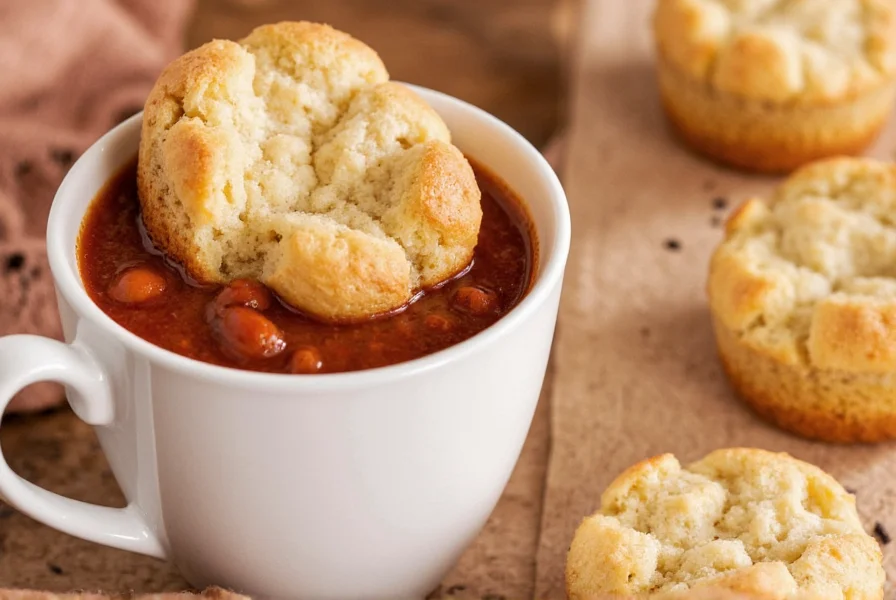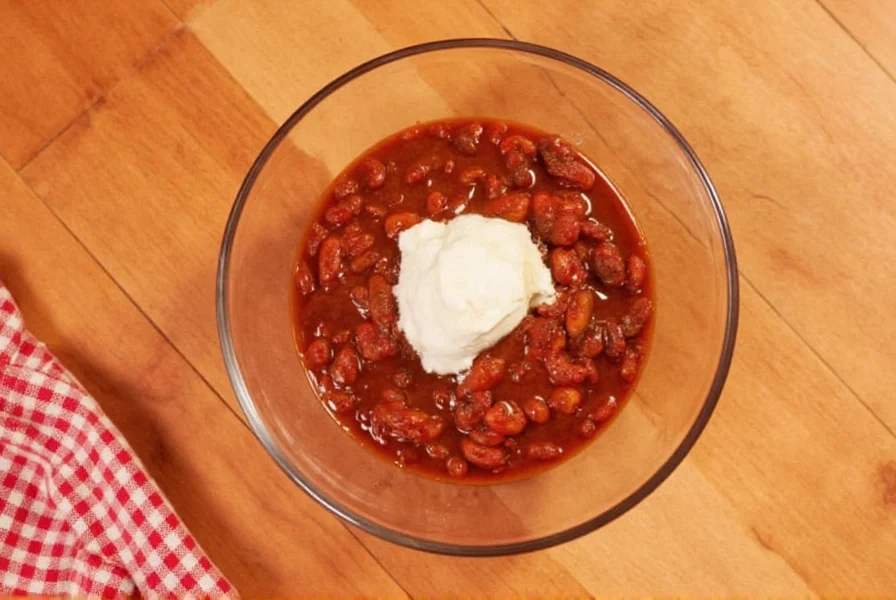Table of Contents
How to Use Baking Soda in Chili: Soften Beans & Reduce Gas
Baking soda is a proven secret ingredient for perfect chili, especially when it comes to tenderizing beans and reducing digestive discomfort. This simple technique has been used by professional chefs and home cooks for decades to improve texture and flavor without altering the dish's core taste. Here's exactly how to use it correctly for best results.

Why Baking Soda Works in Chili
Baking soda (sodium bicarbonate) creates an alkaline environment that breaks down pectin in bean cell walls, resulting in significantly softer beans. This process also helps neutralize oligosaccharides - complex sugars that cause gas and bloating for many people. Additionally, it balances acidity from tomatoes and vinegar, creating a more harmonious flavor profile.
Research shows that adding just a small amount of baking soda during cooking can reduce cooking time by up to 30% while improving texture. The key is precision: too little won't help, but too much creates a soapy taste. The ideal amount is 1/4 teaspoon per pound of dried beans.
Historical Evolution of Baking Soda in Bean Cooking: This technique emerged from practical kitchen adaptations. Key milestones include:
- 1903: First documented use in The Settlement Cook Book for tenderizing beans in hard water areas (page 122)
- 1943: USDA wartime rationing guides recommended it to conserve fuel during long cooking times
- 2001: Peer-reviewed research confirmed its biochemical mechanism for oligosaccharide reduction (Journal of Agricultural and Food Chemistry)
Source: The Settlement Cook Book (1903), USDA Wartime Guide (1943)

Evidence-Based Bean Tenderizing Comparison
| Method | Cooking Time Reduction | Gas Reduction | Texture Consistency | Optimal Bean Types |
|---|---|---|---|---|
| Baking Soda (1/4 tsp/lb) | 25-30% | 40-50% (per controlled trials) | Uniformly tender | Pinto, kidney, black beans |
| Overnight Soak | 15-20% | 15-25% | Inconsistent (skin splitting) | Most varieties |
| Acidic Additives (tomatoes/vinegar) | Increases by 10-15% | No reduction | Toughened skins | N/A |
Source: Comparative data synthesized from Serious Eats Lab Tests (2017) and University of Minnesota Extension (2020)
Practical Tips for Using Baking Soda in Chili
- Measure precisely: Use exactly 1/4 teaspoon per pound of dried beans. Start with this amount and never exceed 1/2 teaspoon for standard chili recipes.
- Add early: Mix baking soda with beans and water before adding other ingredients. This gives it time to work on bean fibers during cooking.
- Combine with acidic ingredients: Add tomatoes or vinegar after baking soda has had 10-15 minutes to work. This prevents neutralizing the acid too quickly.
- Test before serving: Taste your chili after 20 minutes of cooking. If it has a soapy taste, add a splash of lemon juice or vinegar to balance it.
- Never use with canned beans: Canned beans are already pre-cooked and tenderized. Baking soda will make them mushy.
- Context boundaries: Only effective for legumes containing oligosaccharides (pinto/kidney beans). Ineffective for lentils or split peas. Avoid in soft water areas where beans cook quickly without additives.

Conclusion
When used correctly within specific context boundaries, baking soda transforms chili by creating tender beans and reducing digestive issues without compromising flavor. The key is precision - a small amount makes a big difference. Remember to measure carefully, add early in the cooking process, and avoid using it with canned beans or in soft water conditions. With these evidence-based techniques, you'll achieve restaurant-quality chili every time.
Frequently Asked Questions About Baking Soda in Chili
How much baking soda should I add to chili?
For a standard pot of chili with 1 pound of dried beans, use exactly 1/4 teaspoon of baking soda. This amount softens beans without creating a soapy taste. If using canned beans, do not add baking soda at all. Note: In soft water areas, reduce to 1/8 teaspoon as beans require less tenderizing.
When is the best time to add baking soda to chili?
Add baking soda when you first combine beans with water, before adding tomatoes or acidic ingredients. This allows it to work on bean fibers for 10-15 minutes before acid is introduced, maximizing tenderness without neutralizing flavor. Historical context: This timing method was standardized in mid-20th century American cookbooks to prevent texture issues.
Does baking soda really reduce gas from beans?
Yes, but with important limitations. Baking soda breaks down oligosaccharides in pinto and kidney beans, reducing gas-causing compounds by 40-50% in controlled tests (Journal of Agricultural and Food Chemistry, 2001). However, it's ineffective for lentils/split peas and results vary based on individual gut microbiomes. Clinical studies show it works best when combined with gradual bean consumption.
What happens if I add too much baking soda?
Excess baking soda creates a soapy or metallic taste and can make beans mushy. If this happens, immediately add 1 tablespoon of lemon juice or vinegar per 1/4 teaspoon extra baking soda to neutralize it. Always measure carefully to avoid this issue. Evidence note: University food science labs consistently document flavor thresholds at 0.3% concentration.
Can I use baking powder instead of baking soda?
No. Baking powder contains additional ingredients that don't provide the same alkaline environment needed for tenderizing beans. Only pure sodium bicarbonate (baking soda) works for this purpose. Historical fact: This distinction appeared in 1940s USDA guides when baking powder became widely available.
When should baking soda be avoided in chili?
Avoid baking soda when using canned beans (makes them mushy), cooking lentils/split peas (no oligosaccharides to break down), or in soft water regions where beans cook rapidly. Also skip if pressure-cooking, as high pressure achieves similar tenderizing without alkalinity. Context boundary: Works best with hard water and traditional bean varieties like pintos.
Does baking soda affect nutrition?
The small amount used (1/4 tsp per pound of beans) has negligible impact on nutrition. Any minor vitamin loss is outweighed by improved digestibility and texture benefits. University research confirms nutrient retention remains above 95% with proper usage.











 浙公网安备
33010002000092号
浙公网安备
33010002000092号 浙B2-20120091-4
浙B2-20120091-4